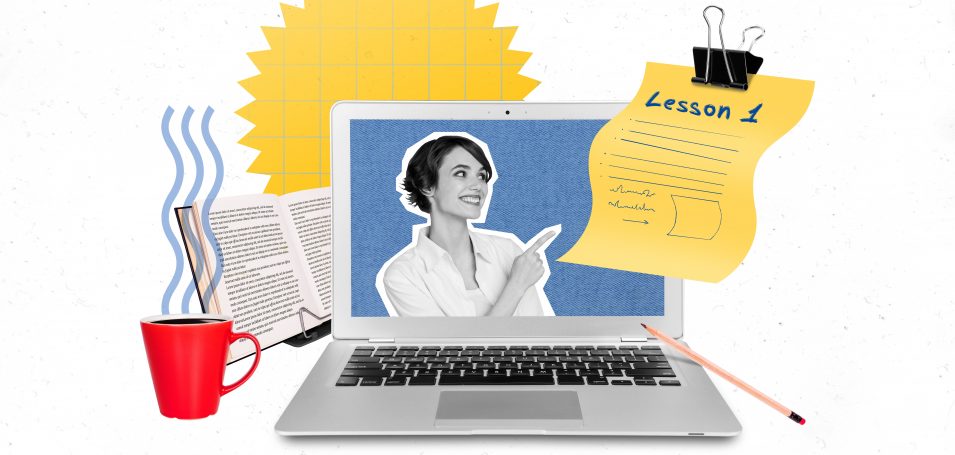Today’s most successful customer education leaders know that above all else, they are competing on customer engagement and retention strategies. They recognize that the customer begins learning from day one (which can be long before they become known to the business), and that they can only succeed by engaging this learner with focused, purpose-built technology and services that meet their specific needs.
Can a traditional Learning Management System (LMS) fill those steep requirements? Here’s why it would be an uphill struggle to try.
We’re thinking about using our all-in-one LMS for customers – what’s the issue?
The global LMS market is set to grow almost 20% every single year until 2026 – so we’re not the only ones to have noticed the increased emphasis on learning as a business driver. While learning and education used to be reserved for employee training, today the focus is on the educated customer and how that contributes to organizational goals and success.
As a result, many legacy LMS vendors who originally built technology to serve the employee are valiantly attempting to extend their offering into the new world of customer learning. However, as Thought Industries’ CEO, Barry Kelly comments “A one-size-fits-all LMS is going to struggle to maintain a roadmap that truly meets the needs of the customer education use case. This is particularly true as organizations grow, scale, and begin to have global business needs with complex use cases.”
The truth is, as legacy LMS technology was never intended for customer education, these solutions can be tough to implement, and impossible to scale or integrate with the modern IT stack. For example, an employee-focused LMS won’t be built to integrate with Salesforce for CRM, with Gainsight for Customer Success, or any other technologies necessary for the extended enterprise, whether that’s customers, partners or any third-party channels.
This is just the beginning of the challenges of using an internal L&D platform for customer education and learning. Legacy systems are largely “one and done”, they lack the ability to scale as you grow, and you can’t use them to monetize and commercialize training offerings. They also tend to have poor support for global customer training operations outside of the four walls of your internal network. We can’t blame them – they simply aren’t built for purpose!
The perfect use case for an employee-focused LMS might be a middle manager who needs to take mandatory compliance training. To start with, you don’t need to worry about providing an engaging digital experience, this employee doesn’t have a choice other than to complete the learning journey. As well as this, the employees taking the course are probably spread over just one or two locations, and they certainly aren’t likely to be paying for the privilege! In contrast, an LMS for customers will need to provide training that competes with a million other priorities, including the user’s free time, so an engaging, on-demand digital experience needs to be part of instructional design from the drawing board. Customers could be anywhere in the world and need localized training for specific requirements, and customer training is increasingly a revenue-generating arm of the business, which can’t happen without baked-in eCommerce functionality.
What does a customer LMS look like?
A customer training platform isn’t a retrofitted employee LMS, it’s a unique tool that was built for this exact need – customer learning. That means that for a customer training LMS to succeed, an organization needs to have the following items on their wishlist:
The ability to scale
If customer learning is the route to business growth, your learning management technology should be ready to meet you both where you are today, and where you’re looking tomorrow. This could be anything from offering license management to cloud-based hosting, signs that your vendor can help you manage a large volume of learners without disruption or loss of performance, and without defaulting to a growing amount of manual effort. Your growth and success relies on the ability to rapidly innovate in response to the market, and any technology you purchase should fit that mentality. In short – they should be helping with your success, not punishing you for it!
Easy integrations
What technology does your organization use to manage your customer relationships? This is what your LMS needs to play nicely with. Whether it’s Tableau for business intelligence and visualization, Zoom for video conferencing and webinars, the ability to integrate your LMS with Salesforce as your CRM, or Gainsight as a customer engagement platform, your vendor needs to recognize that today’s businesses keep the lights on with the help of a technological village.
Reporting and analytics
Data flows in two directions. Being able to plug in the technologies you use every day means that you can extract data from your customer learning to inform the decisions you make, and connect all those internal dots that were previously invisible. How is learning moving the needle on major business KPIs like churn, product adoption or satisfaction? The answer to that question is the Holy Grail of proving the impact of customer education and learning and getting buy-in for your next project.
Content creation tools
Content creation and distribution for customers needs to be scalable, syndicated and real-time. A legacy LMS won’t be built for content authoring, which leaves you scrambling to onboard the right mix of technical staff and creatives who can create engaging learning content and get it to your learners at the right time. To align with today’s fast-paced product and GTM strategy, you need the ability to customize and create online training quickly on the fly. Look for simple content authoring functionality that is no-code, intuitive to build with, and helps you work with efficiency.
eCommerce functionality
There’s no “one size fits all” when it comes to the right time to monetize customer training. However, if your LMS can’t charge for your education offerings, this decision is taken out of your hands. A customer-focused platform allows you to choose the ratio of fee vs free that works for your needs – especially if you offer a variety of products, each with their own pricing and packaging models. The complexity of your offering shouldn’t stand in the way of new potential revenue. Great learning technology offers the means to layer eCommerce on top of your learning product, so you can upsell and monetize in the way that works for you.
Strategic partnership
Great product features are an awesome start, but you never know what business requirements you’re going to have right around the corner, let alone once you’ve fast-forwarded a few years into the future. Partnering with a vendor who understands your roadmap, prioritizes your business goals, and has their finger on the pulse of the industry is increasingly vital in today’s fast-paced world. A strategic partner can help you develop a long-term roadmap, guide you on smart business decisions, and provide an eye for the future of customer education, aligned with your own organizational context.
It’s 2022: Time for an LMS for the extended enterprise
Using an employee-focused LMS for customer education is like forcing a square peg into a round hole. You can’t help but end up with gaps and frustration.
Instead, a platform built for customer learning will scale as your business thrives and expands. For quick time to value, look for robust content development features that allow you to keep up with the latest product updates, and seamless integrations so that the data flows freely in both directions. This not only means your LMS can fit seamlessly into your existing technology ecosystem, but also offers at-a-glance reporting and analysis from your customer training program and its impact on the business, allowing you to present a compelling story to your executive board all wrapped up with a bow.
Is this the year you take customer training to the next level? Schedule a demo to talk to an expert.


